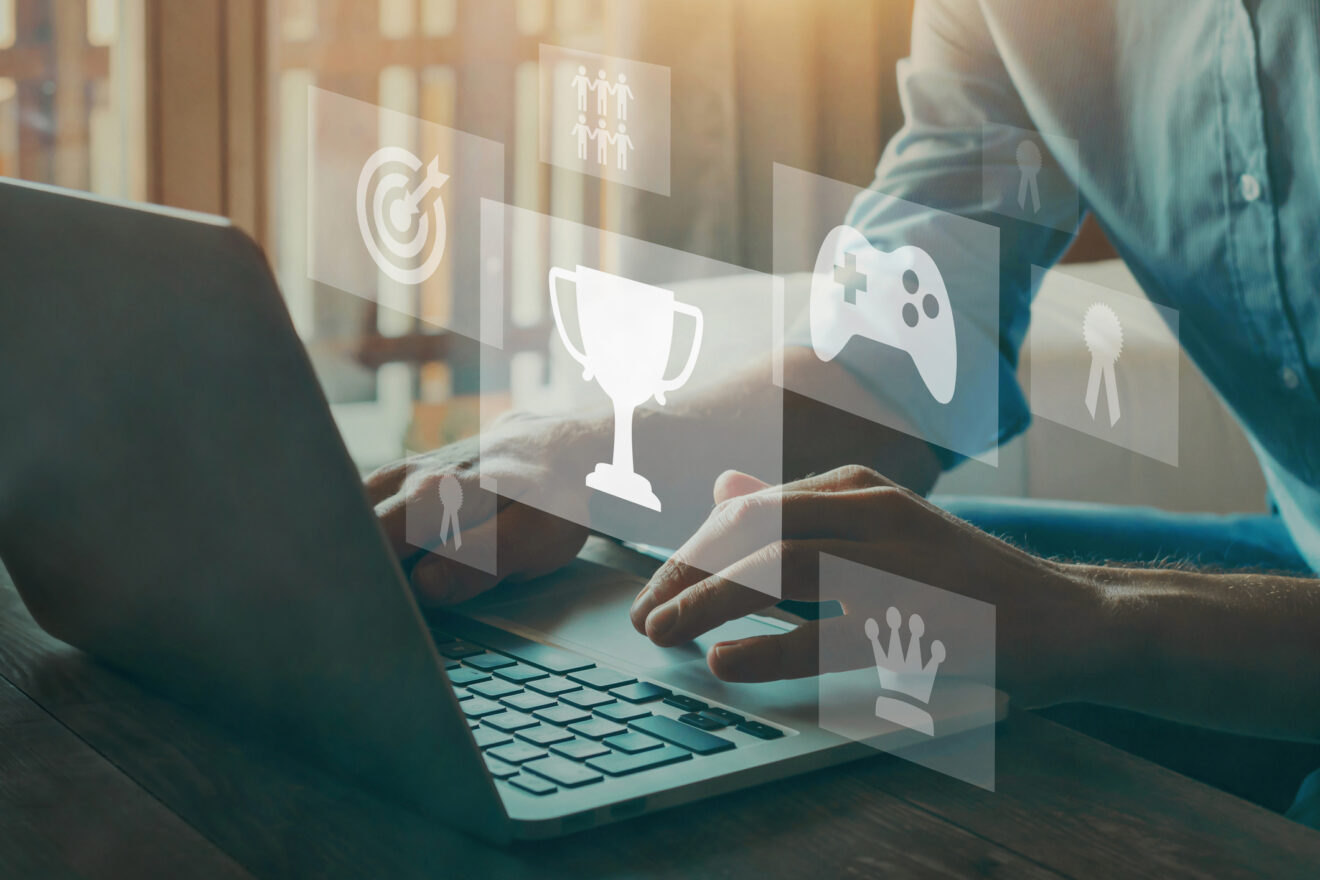Several years ago, analysts at Deloitte wrote, “Learning opportunities are among the largest drivers of employee engagement and strong workplace culture … they are part of the entire employee value proposition, not merely a way to build skills.”

In this era of the Great Resignation/Reshuffle/Reprioritization, learning is both a recruitment and a retention tool as today’s learner prefers and expects training to be personalized, connected, fun and yet easily aligned and applicable to a company’s bottom-line. Gone are the days in which traditional one-size-fits-all learning and technology methods can be used: The disconnected systems, bureaucratic processes and robotic training curricula that were once stereotypical of L&D are no longer conducive or synonymous to providing an impact on the learner or the business.
So, what is the answer? One solution: gamification.
The benefits of gamification
Gamification is rooted in psychology, sociology, reasoning and logic because it maps, leverages and exploits the complex and intricate relationships between human behaviors and what drives them. This is why L&D leaders have begun applying gaming principles and mechanics to what they want to achieve — to get the most out of the “player.” Whether found in a game, or in a course, they have the same motivational effect, while also building connection, allowing employees to vulnerably reflect and achieve growth through recognition. Through extensive research, we’ve discovered::
- When employees are emotionally disconnected, it can lead to low morale, high employee turnover, soaring recruitment and training costs, sagging productivity, less collaboration and creativity, lower revenue/profitability, rising absentee rates, weakened company culture and more employee mistakes — to the tune of $550 billion in losses every year.
- Research indicates that the highest performing teams have fostered environments of psychological safety, which games provide, also noting that empathy is an important way to minimize turnover. Having that sense of security really helps in terms of creativity, curiosity, imagination and fun.
- Recognition/appreciation is the #1 driver of engagement with 69% of employees saying they’d work harder if they felt more appreciated. Gamification gives learning leaders a unique opportunity to motivate employees organically for taking training/action as they see instant results of their hard work.
Real-world examples of gamification in the workplace
Use Case #1: A 150-year-old multinational pharmaceutical and life sciences company
The Opportunity: Increase engagement and camaraderie across a hybrid split-shift team
Core Challenges:
- Conflicts due to personality differences
- Difficulty having uncomfortable conversations
- Difficulty being open and vulnerable
- Decreased motivation and productivity
Key Objectives:
- Increase engagement and communication across two shifts
- Build trust
- Boost morale and camaraderie
- Provide peer-to-peer feedback
The Solution, Process, and Results: The team incorporated a game-centric L&D platform, which uses live multiplayer web-based games, AI technology and end-to-end learning integration to deeply understand employees, improve soft skills, build inclusive teams and revitalize corporate culture. A benchmark assessment revealed that before initiating the gamification process, only 10% of the team had no desire to leave the company. After, 30% of employees had no desire to leave the company, an impressive 20% increase in retention.
Use Case #2: A multinational technology company focused on search engine technology
The Opportunity: Mitigating distributed team challenges before they arise
Core Challenges:
- Distributed team across three countries and four time zones
- Different cultural backgrounds and life experiences
- Lack of in-person interactions
Key Objectives:
- Improve social connectedness
- Allow team members to learn more about each other
- Create a safe environment for sharing
- Enable the building of trust
- Provide interactive, fun and insightful learning
The Solution, Process, and Results: The company’s newly-formed and highly distributed Employee Relations Care Team was in search of a bonding event to kick off their week-long team summit. They wanted a solution that provided something new, facilitated and with the ability to bring people from different backgrounds and experiences together. During the event, the team played a game based on the age-old question: What If? The objective was to open the minds of the team by removing the limitations that most people tend to subconsciously impose on themselves. The ultimate goal of using a game was to help each employee recognize their potential to make a difference in the lives of others by treating one another as valued and worthy human beings. After the event, team members reported high ratings across five core pillars: Engagement, Team Dynamics, Innovation, Cultural Intelligence and Job Satisfaction.
Today, L&D must adapt beyond the norm, gaining deeper levels of insight to close existing skills gaps and enhance the quality and humanity of learner journeys. As these case studies reveal, games exercise the interpersonal skills that employees don’t often receive training in and help employees build capacity for more meaningful conversations focused on active listening, leading to new perspectives, approaches, techniques, strategies and learnings.
Lauren Fitzpatrick Shanks is the founder and CEO of KeepWOL and an award-winning engineer and tech leader, who spent fourteen years working at five Fortune 500 companies, holding various leadership roles in design, system testing, product creation, staffing, software program management, and operations. Lauren is the first Black woman to graduate from The University of Kansas’ Aerospace Engineering Department and the first Black woman to win the American Institute of Aeronautics and Astronautics (AIAA) international design competition.
Opinions expressed by SmartBrief contributors are their own.
_________________________
Subscribe to SmartBrief’s FREE email newsletter on leadership. It’s among SmartBrief’s more than 250 industry-focused newsletters.
